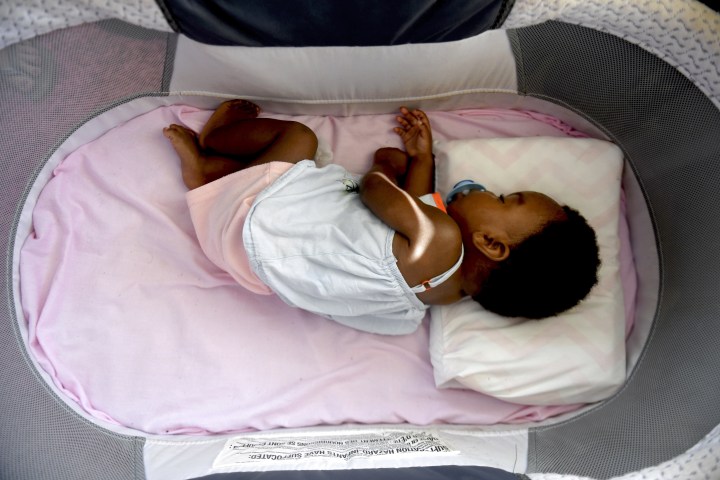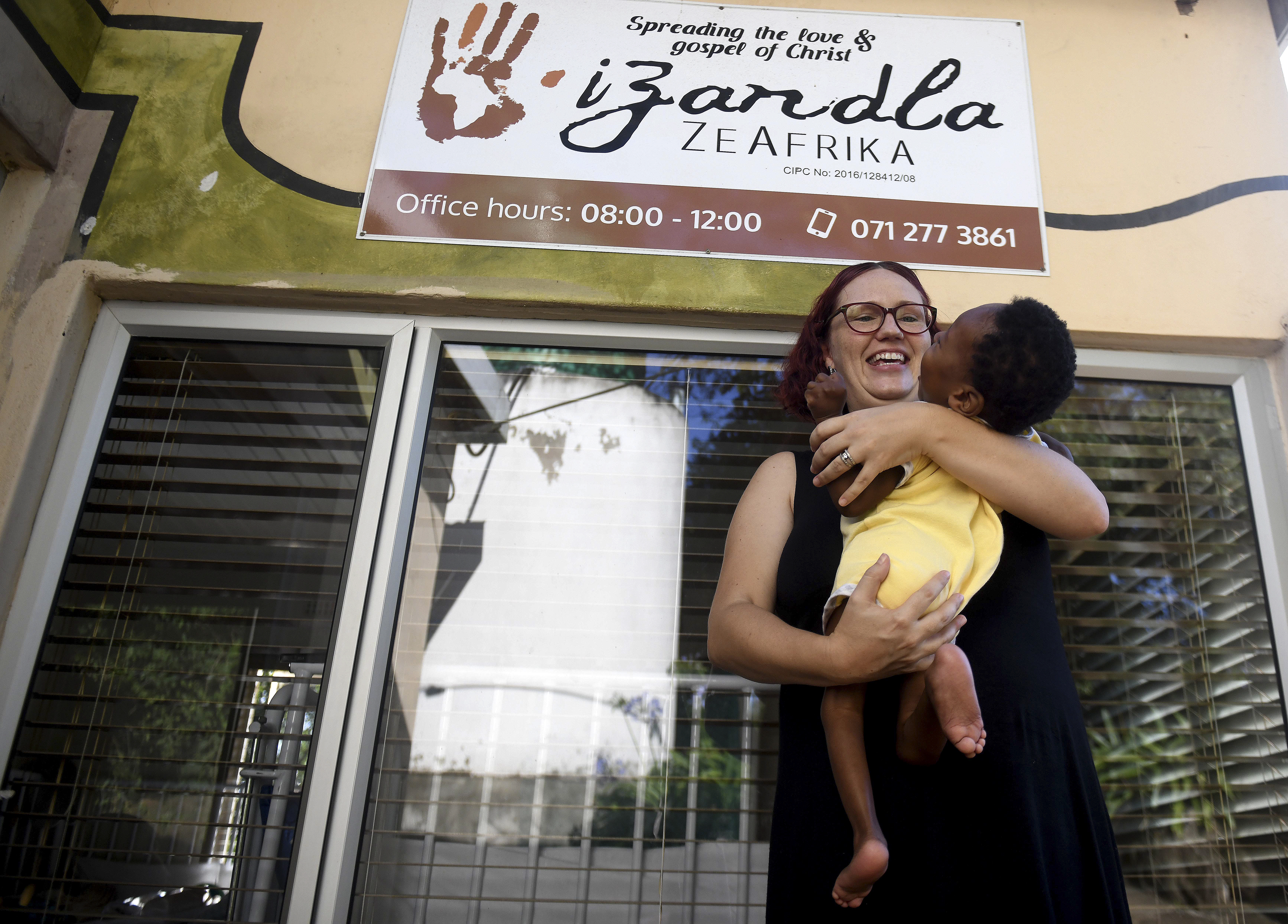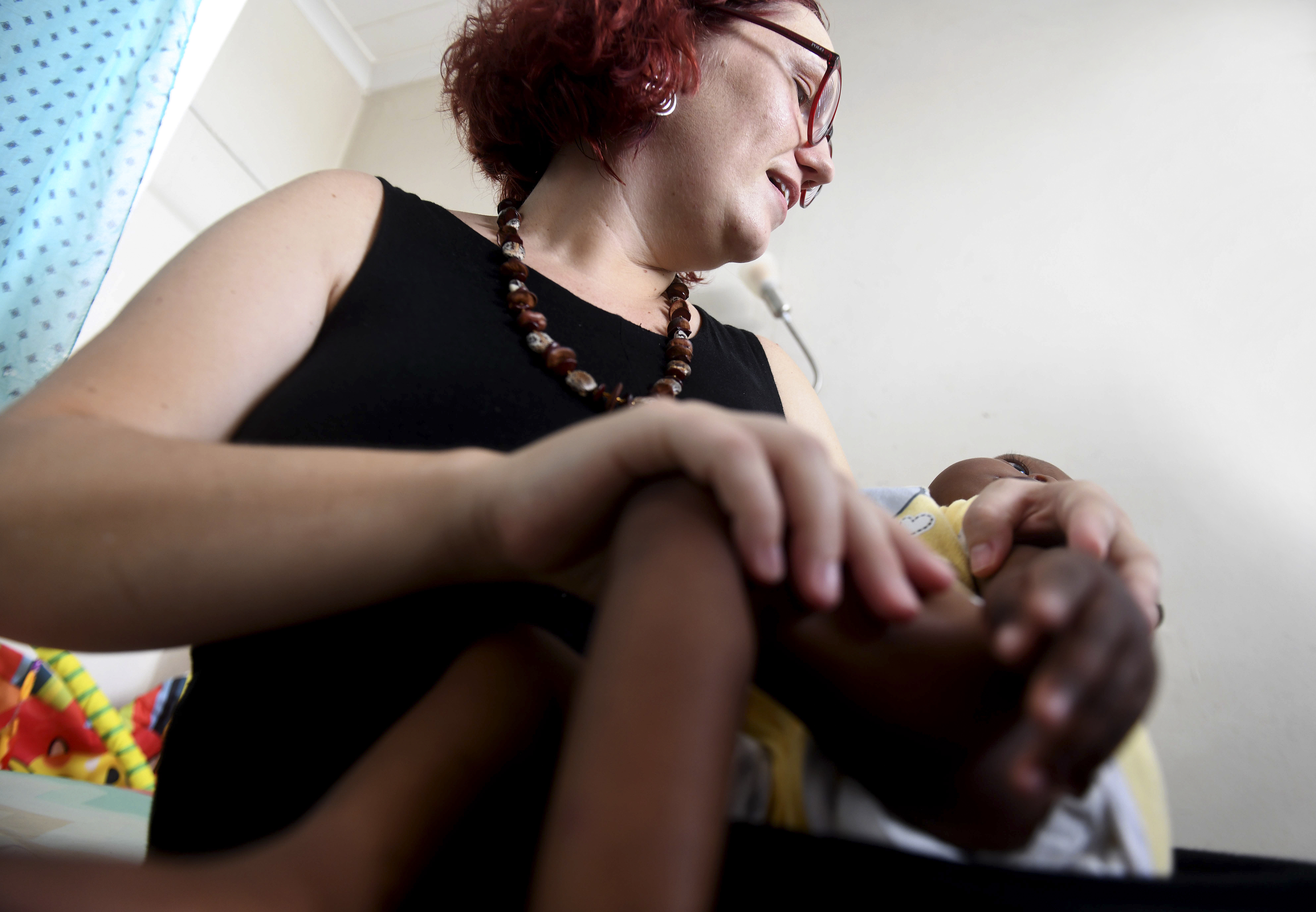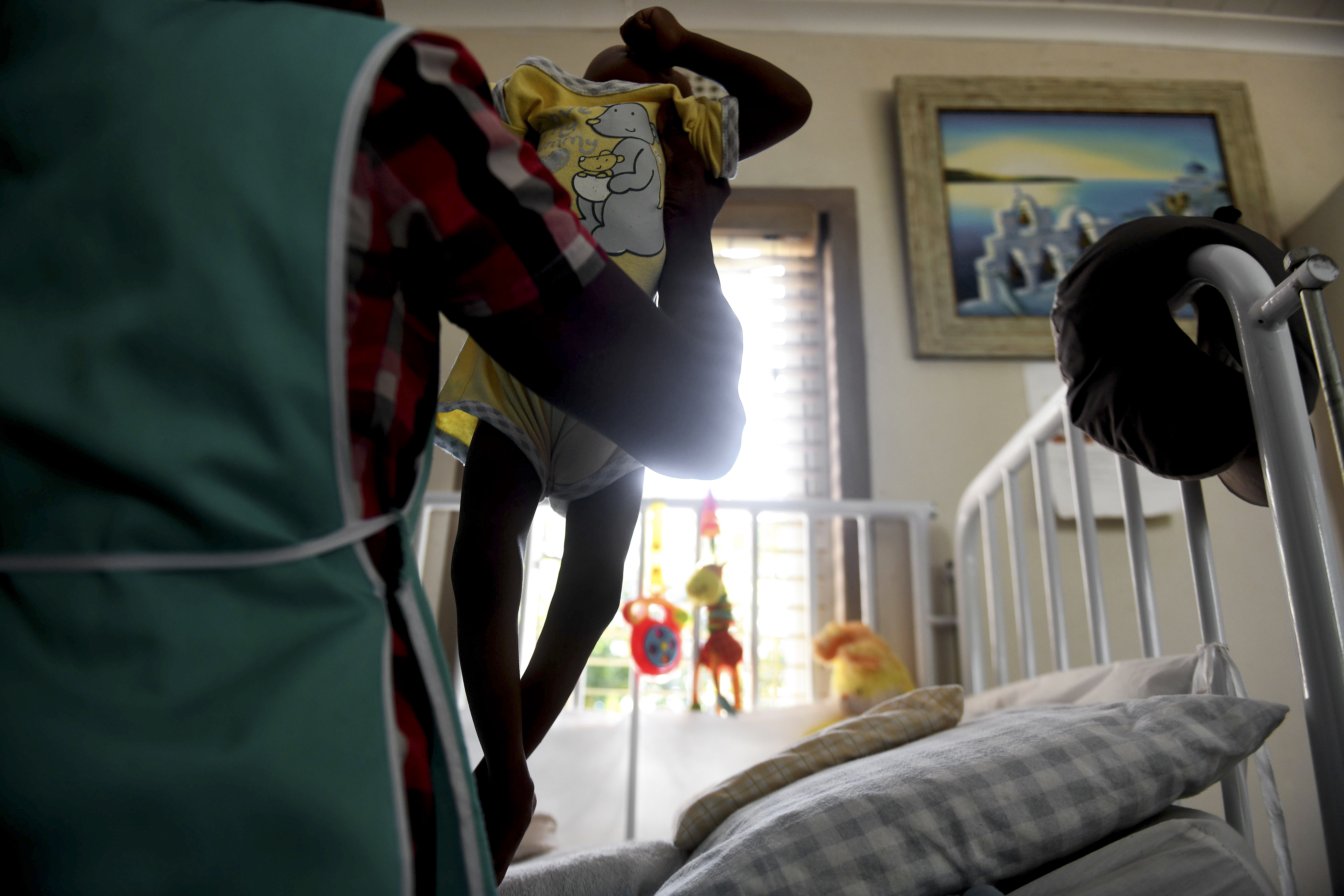Maverick Citizen: Spotlight
A rural home in KZN offers a glimmer of hope for terminally ill children

Children abandoned by government hospitals are finding a new home in a far-flung corner of rural KwaZulu-Natal as one foster family is giving hope to those in need of end-of-life care.
“The babies’ lives are like a butterfly. A flutter, a beautiful glimpse, short, but the beauty lasts,” says Tarryn Bell with a smile.
Bell and her husband, Dr Christoff Bell, are the founders of Butterfly Home, a foster home tucked away in the lush green landscape of Ingwavuma in rural northern KwaZulu-Natal (KZN). But Butterfly Home is no ordinary foster home – they only take children in need of end-of-life care.
“We’re the only hospice setting as far as I know that only takes orphaned and abandoned children. We take the children that are forgotten in the government hospitals, that are just laying somewhere,” says Bell.
Butterfly Home, part of Izandla zeAfrika, a registered NPO, turns two in May 2020 and Bell plans to register the facility as a full-time hospice for children.
The Bells are made aware of each child through their connections in the medical and social work field. Prior to starting Izandla, Tarryn worked as a social worker at Mseleni Hospital in the Umkhanyakude district in KZN and realised the need for a special home for orphaned terminally ill/palliative children.

Tarryn Bell holds Si outside of Butterfly Home. (Photo: Black Star/Spotlight)
The role of government
According to the Department of Social Development (DSD), when a palliative child is abandoned in a hospital, it is the responsibility of the Department of Health to keep the child in care until a social worker can evaluate the child’s circumstances.
“[DSD] does not have facilities for palliative care,” says provincial department spokesperson Mhlaba Memela.
“When [the] child is abandoned in a hospital, the protocol is that a social worker from [the] hospital must report the matter to the South African Police Service [to] conduct investigations to trace parents.”
Following the SAPS investigation, Memela says the matter is then referred to DSD to determine the future care of the child.
DSD provides psychosocial support to families with palliative children, including parents who choose to abandon their child, but Memela says the responsibility of providing palliative care lies strictly with the department of health.
The provincial department of health was approached for comment on this matter, but did not respond by the time of publication.
In 2016, the department reported partnerships with NGOs like the Hospice Palliative Care Association, that controlled 21 facilities that could provide palliative care for adults and children. According to Palliative Treatment for Children South Africa (Patch), there are four registered hospice facilities specifically for children in KZN.
“We’re the only foster family who only takes palliative children in South Africa, as far as I know. That’s why we think we should be a hospice because six [children] is our limit with foster care,” says Bell.
All of Butterfly’s children are assessed by a doctor as well as a palliative care specialist in Durban, and according to Bell, very strict palliative guidelines are followed in terms of pain management and treatment for each child.

Tarryn Bell holds Si inside Butterfly Home. ( Photo: Black Star/Spotlight)
‘You have to live’
“Palliative care is about living well, it’s not about dying. You still have to live in that acute phase of your illness, you can’t go lie down and pass away, you have to live,” says Bell.
Bell and her family’s journey into paediatric palliative care is a personal one. It includes the loss of a child in 2012. Before coming to Ingwavuma, Bell and her family were based in Mseleni where Christoff worked at Mseleni Hospital. After an orphanage near the hospital approached the Bells to foster Ncami, a baby girl with severe down syndrome, their lives changed forever. Little Ncami was with the Bells for six months before she passed away and has kept a firm grip on their hearts ever since.
“For us it’s a thing of you are a child first and you are sick second,” says Bell.
“Your illness is not defining who you are. You are a child, you need to develop like a child, you need to learn to love like a child, learn to play and enjoy life like a child. That’s why it’s such a special calling. You can’t focus on the diagnosis, you have to focus on the child.”
Butterfly Home has five care workers from the local community, including a house mother. Bell hopes that one day the home will be run entirely by the caregivers and house mother, so that the home can be handed back to the community.
“As far as possible we try and employ ladies who have been widowed to care for our orphans here. I think it’s a beautiful model because it gives the ladies a second lease on life. It’s a new way to generate an income and it gives you a new sense of purpose instead of just sitting at home,” says Bell.
House mother Doris Nthuli told Spotlight that she lost her husband in 2004, but no longer feels like her life is stuck. “I love kids,” says Nthuli. “I like to be in the house, I like to cook for kids, I like to play with kids, many things I can mention.”
Spotlight met the five children that call Butterfly Home, home, and all were full of big smiles and laughter.

One of Butterfly Home’s care workers readies Si for a nap.( Photo: Black Star/Spotlight)
Si
Si was found by a jogger in Soweto, abandoned in a bush as a newborn. He has a rare chromosomal condition called Edwards Syndrome, which includes cerebral palsy, a deformed palate, scoliosis and intellectual disability.
“Only 1% of these babies survive and he’s one of those 1%. Only 10% make it to the age of one year and he’s one of those,” says Bell.
“When we went to go fetch him, we thought he was going to pass away before he got here. We decided we can’t just leave this baby because nobody knows how to care for him, and he can’t stay in a government hospital because he’ll pass away. No one took the time to give him enough nourishment, so he was just skin and bones when he came to us.”
Si is now fat and happy, according to Bell, laughing as she gently tickles his tummy.
Fafa
While Butterfly Home usually only takes palliative children, a local emergency forced the Bells to make an exception.
Fafa is now five years-old and was found two years ago, abandoned in an outhouse in one of Ingwavuma’s villages. Fafa is blind and has cerebral palsy, and in an effort to cure her, her family took her to several traditional healers.
“They did horrible things to her,” says Bell.
“They did rituals and made her drink concoctions, but then they left her in an outhouse that didn’t have a roof. It was winter, without clothes, without bedding, and [they] withdrew food and water. They’re not sure how long she was there, but she was semi-conscious by the time she was found.”
Fafa was in the hospital for over a month, but was so traumatised that doctors and nurses struggled to treat her.
“After a month there, I went to the doctor at the paediatric ward and asked if we could take her even if it was just to stabilise her because they had to sedate and tie her up, they couldn’t cope with her. She was just too traumatised,” adds Bell.
Sunny bunny
“She reminds me a lot of Ncami,” says Bell, smiling at the bouncy five-year-old girl, fittingly in a butterfly dress.
Sunny has down syndrome, an inoperable heart condition and Eisenmenger Syndrome. This rare heart condition means that Sunny’s blood is not properly oxygenated and pumped through the body.
“[She has] had a full report by palliative specialists [and] for her to survive, she needs a full heart and lung transplant which we’ve never had, there’s not a chance,” says Bell.
During the interview, Sunny hopped between Nthuli and Bell’s laps, smiling often, throwing her hands up, demanding to be held once the interview finished.
“If you just give that child the right tools to manage pain and to have something in the day to look forward to, they bounce back amazingly,” says Bell.
Bell describes Sunny as any five-year-old – mischievous.
“The amazing thing is, [children are] resilient. Adults can say I’m sick I’m going to die now. It’s almost like they give up. Children don’t realise how sick they are, they are so resilient,” says Bell.
‘Pastor’ Smangi and little Yazzi
“They call him pastor because he’s so well-behaved,” says Bell, smiling down at Smangi who has just woken up from his afternoon nap.
Smangi is four years old and has hydrocephalus, in other words, fluid in his brain.
“He was number 12 of his mother,” says Bell. “I think he was in hospital for a very long time and as soon as they gave her the palliative diagnosis, she absconded and left him in hospital.”
Currently, Smangi has a shunt which helps to direct the fluid in his brain down to his stomach, but the decision has been made that once his shunt fails, it won’t be replaced. This is in line with his palliative report and recommendations from a palliative specialist.
Quietly, Bell takes Spotlight into another room, where Yazzi is sound asleep in her crib. Yazzi is almost one, and was allegedly conceived out of incest between a sister (13) and brother (16).
“She has a lot of congenital issues because of the incest, so she’s also in complete heart failure. [Her] family didn’t want to see her at all because of the conditions and the way she was conceived, so Yazzi wasn’t supposed to live long. She was very acutely palliative when she got here. We gave her a few months. Everyone did,” whispers Bell.
“All of our children come here half-dead and maybe it’s just that they feel loved,” says Bell.
“Our hope is that we truly believe no child is a mistake, no matter their condition or where they came from or how long they live. There’s a purpose for every single child.” MC
*Read more of Spotlight’s stories on palliative care for children in Cape Town and Bloemfontein
**Children’s names used in the article are not their real names and have been changed by Bell
This article was produced by Spotlight – health journalism in the public interest.





















 Become an Insider
Become an Insider